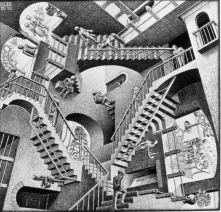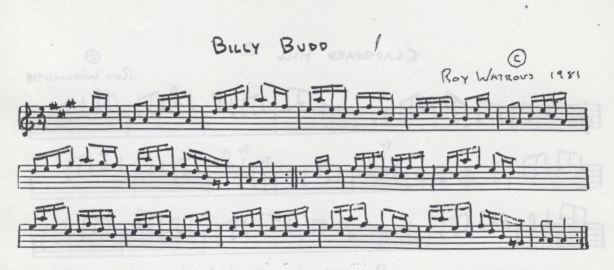Music comes from the strangest places…
Diana Deutsch is a Professor of Psychology at the University of California, San Diego, who studies sound and how we perceive it. Specifically, she is interested in musical illusions and paradoxes. You could think of these paradoxes as being the auditory equivalent of an M.C. Escher drawing.

Diana has performed a variety of interesting sound experiments over the years including a fascinating one where she demonstrates that pitch and tone may be stored by our brains in locations that are separate from where speech is stored. In other words, the sounds of someone talking is not stored in the same region of the brain as music regardless of the fact that they are both made from the same elements, pitch and tone.
I’m not a psychologist nor a neuroscientist but it seems logical to me that as we are perpetually bombarded with a cacophony of sounds, such as speech, our brains are probably most concerned with our basic well being and survival versus our enjoyment. For example, there are two very different ways to listen to an oncoming train: Hear it and get the hell out of the way; hear it and feel the grove. Feel the groove before establishing your safety and your likely to become track pizza. Conversely, it stands to reason that while basking in the glory of a Bach concerto the fight-or-flight department of our brains is at rest while the sit-back-and-relax department takes over. But once your safety has been secured what happens to the rattling of that train in your head? Can it morph into music?
Diana stumbled upon a compelling auditory phenomenon demonstrating that seemingly arbitrary sound can, in fact, morph into music without any changes being made to the sound itself. In a story she conveyed on NPR, she described how one evening she was working with tape loops of recorded speech. She started with the following recorded bit of speech:
The sounds as they appear to you are not only quite different from those that are really present, but they sometimes behave so strangely as to seem quite impossible.
She then created a tape loop consisting of the following fragment:
sometimes behave so strangely
At some point she got up to take a break from her work, maybe get a cup of coffee, and forgot about the running tape loop. A while later, she spontaneously started hearing the faint sounds of music and eventually realized that the audio loop playing in the background had transcended from mere speech into melody. Most strikingly she found that when listening to the snippet of speech, placed back into the context of the sentence from which it came, it still retained it’s melodic qualities, as though being sung, while the rest of the speech was heard as being normal.
What happened here? My humble guess is that at some point her brain stored a copy of the speech loop in the sit-back-and-relax department and, consequently, gave her noggin the opportunity to make music from it. To be clear, this music was made not by the speaker but by the perceiver!
Making that synaptic leap is the sort of thing composers do well, which may be part of the reason they are what they are in the first place. One of my favorite stories of spinning arbitrary sound into something beautiful was conveyed to me by the late great composer of fife music, mentor and friend Roy Watrous. For many years he worked in a machine shop where he would hear the repetitive sounds of the machines chugging away at their mechanical tasks. The sounds of these machines were seared into his brain and he eventually heard them as melodic in the same way we are fooled into believing that the looping speech in Diana’s experiment was sung. Those machines were Roy’s inspiration for a wonderful tune he entitled ‘Billy Budd’. The tune, and many other classics, can be found in The Watrous Book. Here is the notation to Billy Budd as written out by Roy:

So, take a listen to Diana’s sounds that Behave so Strangely. Listen to it twice. I guarantee the second time you will hear it differently. After that, sit back and relax to Roy’s classic ‘Billy Budd’ as played by The Ancient Mariners on their American Fife & Drum Music album from 1981. Can you imagine the machines?
5 COMMENTS
It’s as if the foundation for music exists everywhere, almost like an echo that’s bottled up waiting to have its own “aha” moment.
Toodle Loo!
Tara
When I started to read your story about Diana Deutsch, and her words morphing in to music, I remembered Roy telling me how he wrote Billy Budd, from the sounds of the machines in his shop. I was glad to see that you wrote about Roy this blog.
I think that it’s amazing how the human brain perceives music. To some people it’s just noise, but to others it’s melodic tunes and rythms.
So, what about tonal-centric languages like Mandarin? Do the people that speak such languages naturally think more melodically? Check out Mandarin is Music to the Brain and Research Finds Music Training Tunes Auditory System for some interesting research on this topic.
I’ve got two questions. One, where’s the fife? Two, give me the fife.
For speech turned into music, see also Orbital’s Time Becomes.
Yeah, listening to that also reminds me of some of the other experiments Diana has conducted where you start to hear words that are not really there. She calls them phantom words.